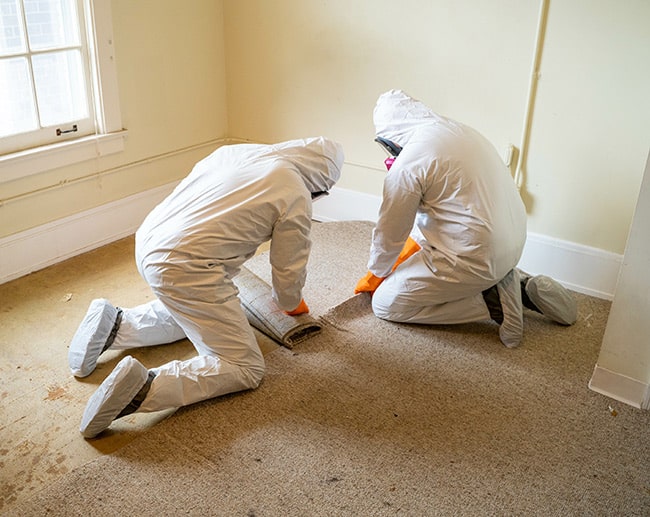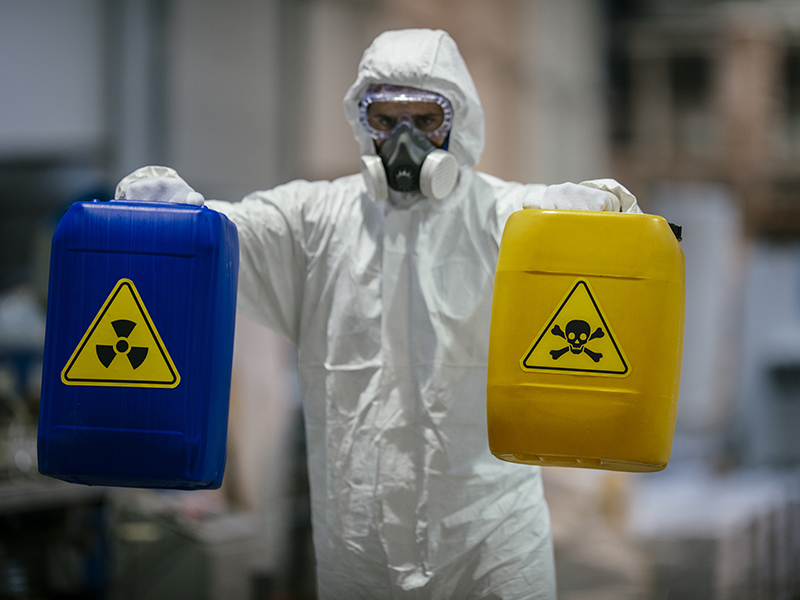Hoarder Cleanup Solutions: Restoring Order and Security in Your Home
Hoarder Cleanup Solutions: Restoring Order and Security in Your Home
Blog Article
Expert Biohazard Cleaning and Decontamination for Blood, Bodily Fluids, and Hazardous Products
The possible wellness threats linked with direct exposure to biohazards emphasize the critical need for meticulous handling and comprehensive cleanup. As we navigate the intricate landscape of biohazard cleanup, understanding the subtleties of laws, conformity, and the customized devices at play ends up being crucial in making sure a risk-free and complete decontamination process.
Wellness Threats of Biohazard Exposure
Exposure to biohazards poses substantial wellness dangers that can result in severe effects for communities and people alike. Biohazards incorporate a variety of organic compounds, including blood, physical liquids, mold, microorganisms, viruses, and other possibly contagious products. When individuals enter into call with these biohazards, whether with accidents, inappropriate handling, or ecological exposure, they encounter the risk of having major illnesses or conditions.
One of the key health and wellness threats connected with biohazard exposure is the transmission of contagious diseases. Bloodborne microorganisms such as HIV, hepatitis B and C, and different bacteria can be present in biohazardous products, positioning a straight risk to human wellness. Inhaling air-borne biohazards like mold spores or entering call with polluted surface areas can also cause respiratory problems, allergic reactions, and various other damaging health effects.
Additionally, biohazard exposure can have long-lasting health and wellness effects, with some conditions manifesting years after the initial get in touch with (Blood Cleanup). As a result, it is critical to focus on correct biohazard cleansing and purification to minimize these health and wellness threats and ensure the security of people and areas

Specialized Educating for Biohazard Cleaning
When it involves taking care of biohazard cleaning successfully and securely, specialized training plays a basic duty in making certain correct purification procedures are followed. Biohazard cleaning calls for certain expertise and skills to properly minimize dangers related to bloodborne virus, physical fluids, and dangerous materials. Professionals trained in biohazard cleaning undertake rigorous guideline on exactly how to securely handle, remove, and dispose of biohazardous materials to protect against contamination and direct exposure.
Specialized training for biohazard cleaning covers a series of important subjects, consisting of appropriate individual protective tools (PPE) use, bloodborne pathogen recognition, decontamination techniques, and unsafe waste disposal procedures. People learnt biohazard cleanup are geared up with the necessary knowledge to analyze contamination degrees, recognize potential threats, and carry out appropriate clean-up treatments in compliance with governing standards.
Continual training and education are extremely important in the field of biohazard clean-up to remain updated on the current decontamination modern technologies, safety procedures, and regulations. By investing in specialized training, biohazard cleaning professionals can successfully reply to emergency clean-up scenarios and protect both public health and wellness and the setting.
Importance of Appropriate Purification Techniques
Utilizing appropriate purification strategies is important in biohazard cleaning to effectively get rid of harmful materials and reduce wellness risks. Efficient purification not just makes certain the elimination of noticeable traces of blood, bodily fluids, and other biohazards however additionally targets unseen microorganisms that may present significant health threats if not correctly removed. By adhering to rigid purification methods, educated specialists can significantly decrease the danger of exposure to harmful microorganisms, viruses, and bacteria that might bring about diseases or infections.
Proper decontamination techniques include using specialized equipment and disinfectants that are especially designed to neutralize biohazards efficiently. Detailed cleansing and disinfection of contaminated areas are vital to prevent the spread of virus and make certain a risk-free atmosphere for occupants. In addition, the right disposal of biohazardous waste complying with decontamination treatments is crucial in stopping contamination of various other surfaces or people.

Equipment and Devices for Safe Cleanup
The correct equipment and devices play Biohazard removal an important duty in making sure the reliable and safe clean-up of biohazardous products. When handling blood, physical liquids, or dangerous products, biohazard cleansing experts depend on specialized gear to lessen exposure risks and extensively decontaminate the afflicted location. Personal protective devices (PPE) such as handwear covers, safety glasses, coveralls, and masks are crucial to secure versus direct call with possibly infectious products. Additionally, biohazard cleaning sets having disinfectants, absorbent products, and biohazard bags are utilized to safely consist of and get rid of of infected things. Blood Cleanup.
Advanced cleansing tools like hospital-grade disinfectants, HEPA-filtered vacuum cleaners, and misting makers are used to disinfect surface areas and eliminate biohazards efficiently. Specialized tools such as sharps containers and biohazard waste disposal containers are utilized to safely manage sharp objects and biohazardous waste products. By using the ideal equipment and devices, biohazard cleansing experts can guarantee an extensive clean-up process that focuses on security and minimizes wellness dangers for both workers and owners of the afflicted space.
Rules and Conformity in Biohazard Cleaning
Correct adherence to guidelines and compliance criteria is extremely important in biohazard cleaning to ensure the safety and security of both workers and the atmosphere. Federal government companies such as OSHA (Occupational Safety And Security and Health And Wellness Administration) and the EPA (Environmental Defense Agency) have actually established details guidelines for biohazard cleaning procedures to decrease health and wellness threats and environmental contamination. These laws cover a variety of facets including the handling, transport, and disposal of biohazardous materials, in addition to the essential training and protective tools required for workers associated with the cleanup procedure.
Biohazard cleansing companies have to stay updated with these laws to guarantee that their procedures fulfill the required security criteria. Failure to follow these laws can result in serious effects, consisting of fines, lawsuit, and jeopardizing the health of people and the setting. By adhering to stringent policies and conformity actions, biohazard cleaning business can properly mitigate risks and guarantee a comprehensive and risk-free cleanup process for all parties included.
Final Thought
To conclude, biohazard cleansing and purification call for customized training, proper techniques, and adherence to policies. Exposure to blood, bodily fluids, and harmful materials presents considerable health and wellness dangers, making it important to utilize the ideal devices and tools for risk-free clean-up. By following stringent protocols and guidelines, professionals can effectively mitigate the threats connected with biohazard direct exposure and make certain the safety and security of both themselves and others.
As we browse the complex landscape of biohazard clean-up, comprehending the nuances of regulations, compliance, and the specialized tools at play comes to be important in guaranteeing a comprehensive and safe purification procedure. (Blood Cleanup)
When it comes to managing biohazard cleaning successfully and securely, specialized training plays a fundamental duty in making certain appropriate decontamination treatments are complied with.Utilizing correct decontamination strategies is critical in biohazard clean-up to effectively minimize and get rid of hazardous products health dangers. Additionally, biohazard cleansing kits consisting of disinfectants, absorptive products, and biohazard bags are utilized to securely dispose and consist of of contaminated products.
Federal government agencies such as OSHA (Occupational Safety And Security and Health Management) and the EPA (Environmental Defense Agency) have actually developed particular standards for biohazard cleanup procedures to lessen health dangers and ecological contamination.
Report this page